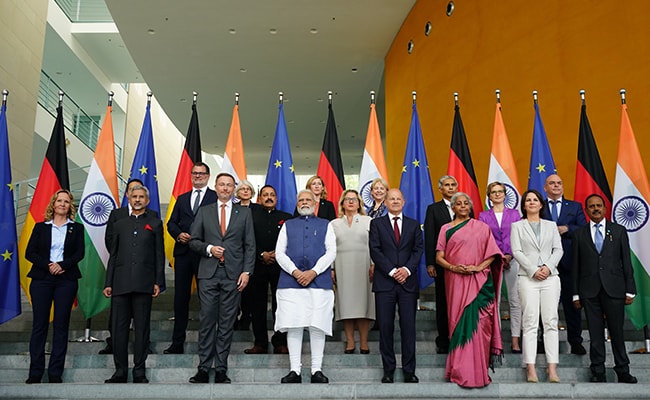Credit Cars Spending and The number of credit cards in circulation in India has surged, with over 5 million new cards issued since January. Recent data from the Reserve Bank of India reveals that the total number of credit cards has hit a record-breaking 87.4 million. This significant increase in Credit Card Spending indicates a growing acceptance and usage of credit cards among individuals in the country.
Credit Card Spending Reaches Record High in May
In May of the current year, credit card spending in India reached a record high of Rs 1.4 lakh crore, surpassing the previous high of Rs 1.3 lakh crore in March, according to data released by the Reserve Bank of India (RBI). This surge in spending indicates a rebound in consumer confidence and a recovery in economic activity following the COVID-19 pandemic. The increased spending is a positive sign for the Indian economy, as it reflects higher consumer purchasing power and a shift towards digital payments.
The rise in credit card spending is further supported by the fact that the average spend per card also reached a new peak of Rs 16,144. This increase suggests that individuals are using their credit cards for larger transactions and making significant purchases.
The robust growth in credit card spending is a testament to the growing importance of credit cards as a preferred mode of payment in India. It also highlights the increasing acceptance and adoption of digital payments in the country. The availability of credit cards offers individuals convenient access to credit and enables them to make purchases even when they do not have sufficient funds immediately available.
The record-high credit card spending in May indicates a positive trend in consumer spending and economic recovery. As individuals continue to embrace digital payments, credit card usage is expected to further increase, driving economic growth in the coming months.
Rise in the Number of Credit Cards in Use
The number of credit cards in circulation has witnessed a significant increase in recent months, reflecting the growing popularity of credit cards among Indian consumers. Since January, over 5 million new credit cards have been issued, pushing the total number of cards in use to an all-time high of 87.4 million, as per the RBI data.
This rise in credit card adoption can be attributed to various factors, including increasing awareness about the benefits and convenience of credit cards, improved access to credit, and the expansion of digital payment infrastructure across the country. The availability of a wide range of credit card options with attractive rewards programs, cashback offers, and discounts on various purchases has also contributed to the growing demand for credit cards.
The rapid growth in the number of credit cards in use indicates that more individuals are relying on credit cards for their day-to-day transactions and financial needs. Credit cards provide individuals with a convenient and secure payment method, eliminating the need to carry cash or visit physical bank branches. The availability of credit cards also allows individuals to make purchases online, further fueling the growth of e-commerce in India.
With the increasing number of credit cards in circulation, financial institutions are expanding their credit card offerings and services to cater to the growing demand. This includes launching specialised credit cards targeting specific customer segments, such as travel enthusiasts, shoppers, or frequent flyers, with tailored benefits and rewards.
Leading Players in the Credit Card Market
HDFC Bank, one of the leading banks in India, holds the maximum number of credit cards in circulation, with 18.12 million cards as of May. The bank’s strong market position is also reflected in its share of outstanding dues, which accounts for 28.5 percent of the total industry-wide outstanding dues. HDFC Bank’s robust cardholder base and market dominance highlight its successful credit card offerings and customer-centric approach.
SBI Card, the credit card arm of the State Bank of India (SBI), holds the second position in terms of credit cards in circulation, with a total of 17.13 million cards. SBI Card’s strong presence can be attributed to its extensive customer reach and synergies with the country’s largest public sector bank, SBI.
ICICI Bank, another prominent player in the Indian banking sector, follows closely with 14.67 million credit cards in circulation. ICICI Bank’s comprehensive range of credit card products, along with its strong customer base and digital banking capabilities, has contributed to its market position.
Axis Bank, which recently acquired the retail portfolio of Citibank, ranks as the fourth-largest credit card issuer with 12.46 million cards. This acquisition has helped Axis Bank narrow the gap with ICICI Bank and strengthen its market presence in the credit card segment.
The competition among these leading players in the credit card market has resulted in innovative offerings and improved services for customers. They continuously introduce new features, benefits, and reward programs to attract and retain customers, further fueling the growth of credit card usage in India.
Concerns Over Rising Delinquencies and Asset Quality
While credit card spending and the number of credit cards in use have been on the rise, there are growing concerns over rising delinquencies and deteriorating asset quality in the credit card portfolio. According to a TransUnion Cibil report, the 90-day default rate on credit cards increased by 66 basis points to reach 2.94 percent in March 2024.
The report highlights the rising stress among credit card users, indicating potential financial challenges faced by individuals. The COVID-19 pandemic and its economic impact might have contributed to this increase in delinquencies. Financial institutions need to closely monitor and manage their credit card portfolios to mitigate risks and ensure responsible lending practices.
Despite the rise in delinquencies, the report also indicates that credit cards and personal loans have been growing at a faster pace compared to other loan products. This growth demonstrates the increasing demand for unsecured credit and the preference for digital payment instruments among consumers.
Financial institutions need to strike a balance between expanding credit card offerings and maintaining prudent credit underwriting standards to manage asset quality effectively. It is crucial to educate customers about responsible credit card usage, encourage timely repayments, and provide necessary support to individuals facing financial difficulties.
Continued monitoring of credit card portfolios and proactive risk management measures will be essential to sustain the growth of credit cards while ensuring the overall stability of the banking and financial system in India.













